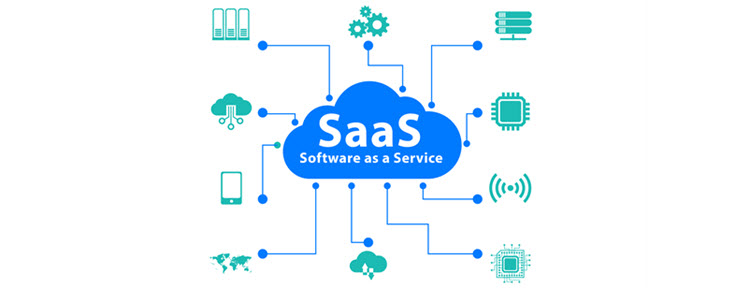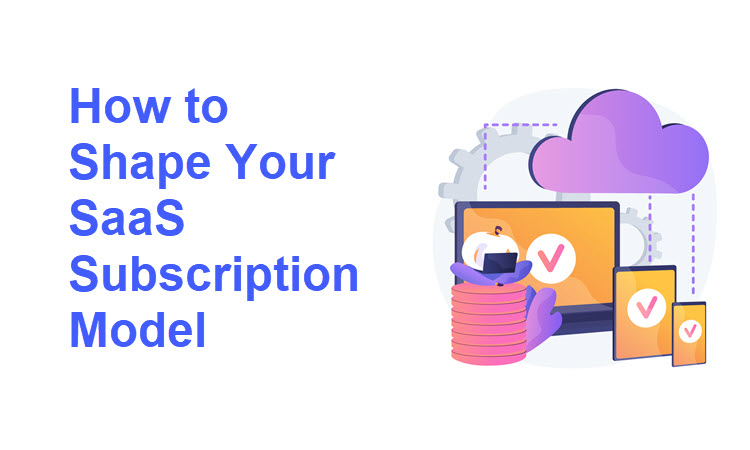Subscription-based pricing models are inherent to software as a service (SaaS) businesses. Subscription management is more complex than keeping track of one-time payments, but the subscription model provides more flexibility and scaling opportunities.
There are many ways to apply a subscription business model. SaaS businesses need to be aware of the pros and cons of different subscription models and pricing options to ensure optimal growth opportunities.
In this article, we’ll explain the two primary SaaS subscription model types, their advantages and disadvantages, and provide examples of successful SaaS businesses to help you shape your SaaS subscription model.
SaaS Subscription Model Explained

Software producers are increasingly offering their software products as cloud services instead of as one-time, permanent desktop installations. The continuous, monthly service comes with a corresponding subscription-based pricing model where users are billed for the product on a recurring basis. The users don’t own the product but have access to it during their subscription period.
Types of SaaS Subscription Business Models
The two main types of SaaS subscription business models are monthly subscription and term or contract subscription.
1. The monthly subscription model is usually based on an electronic agreement between a SaaS business and a user in which the user agrees to pay a set sum each month for access to the software. There is no contracted period for which the customer is expected to pay and use the service. Subscribers are usually billed monthly, and they can cancel the service without a cancellation fee whenever they choose.
The pricing options typically used for monthly subscriptions are:
- Flat or fixed pricing. Users are charged a flat monthly rate for a product with set features.
- Tiered pricing. A company provides multiple product plans with different sets of features at different prices.
- Usage-based or pay-as-you-go pricing. A company charges the user based on how much they used the product.
- Freemium. A company offers basic product features for free and charges a monthly fee for premium features.
Note: To help you decide, find more details in our article Pay-as-You-Go vs. Monthly Subscription.
2. The term or contract subscription involves a legal contract between the SaaS business and the user. The user has continual access to the software for a set period and is billed on a recurring basis (usually monthly) until the end of the term. The subscriber pays a cancellation fee if they want to cancel the service before the end of the term. At the end of the term, they can renew or cancel the service.
The pricing options typically used for term subscriptions are:
- Flat or fixed pricing. A SaaS company charges a flat monthly rate for a set number of features.
- Per-user pricing. A company charges the client based on the number of product users.
The Advantages of a Subscription Business Model in SaaS

The subscription business model provides SaaS businesses with more scaling opportunities, thanks to these advantages:
- Recurring revenue for the merchant.
- Predictable budget that enables long-term project planning.
- Automatic payments, fewer resources used for payment processing.
- Fewer resources used on acquiring new customers.
- More opportunities to build customer loyalty.
- More options for targeting different categories of paying customers.
The Downsides of a Subscription Model in SaaS
The subscription model comes with a few downsides that can impede a SaaS company’s growth, including:
- Customer dissatisfaction with being charged for features they don’t use.
- Constant service or product improvement to retain subscribers.
- Wrong subscription model makes it difficult to change tiers or implement upgrades and different pricing options.
- Complex subscription management, especially with many different product plans.
Examples of Subscription Model in SaaS

When a SaaS company implements the right subscription model and pricing option, it can accurately forecast monthly revenue and strategically employ resources to provide the best service to its subscribers.
The following companies are examples of successful SaaS subscription model implementation.
| Flat monthly subscription | Basecamp, Netflix, and Spotify Premium use a flat-rate monthly subscription model and include a Freemium option. This straightforward model allows them to be fully transparent about their services and prices and enables subscribers to easily budget and plan. |
|---|---|
| Per-user term or monthly subscription | Trello is a popular project management SaaS business that uses the per-user subscription model for enterprises and offers a Freemium option for individual users. Part of the company’s success lies in adapting its pricing options to different categories of customers and offering some features to all users. |
| Tiered monthly subscription | Crazy Egg, Buffer, and HubSpot use a tiered monthly subscription model that provides flexibility to subscribers and allows the company to expand |
| Usage-based (pay-as-you-go) subscription | Usage-based subscription is not common among SaaS businesses, though some of the biggest companies benefit from this model. Amazon Web Services’ monthly pay-as-you-go model gives users a lot of flexibility. They can choose their features, pay only for what they used, and cancel any time. |
Note: Learn everything you need to know about SaaS Billing.
Conclusion
Before choosing your SaaS subscription model, carefully analyze your customers, the competition, your company’s operational costs, and available pricing strategies.
Implement the subscription model that best ensures your company’s growth and acquires satisfied, long-term subscribers.
